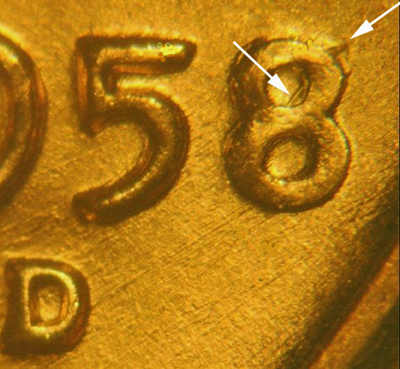PART II. Die Varieties:
Overdate:
1958/7-D Lincoln cent (debunked)
Definition: An overdate affects a single working die. An overdate is created when one numeral is punched over a different numeral. If the second punch involves the same numeral, we call it a repunched date.
Overdates should not be confused with repunched dates, doubled dies, re-engraved dates, or misplaced dates. They should also not be confused with Class III double dies (design hub doubling). The latter also can result in overlapping, dissimilar numbers, but the process is entirely different. Class III doubled dies that result in overlapping, dissimilar numbers are sometimes called overdates, but this is not correct.
For U.S. coins, the overdate era ended in 1908. Beginning in 1909, the date was placed on the master hub or the master die. As a result, any claims of overdates later than 1908 must be greeted with extreme skepticism.

This 1958-D Lincoln cent was once thought to be an overdate. A cluster of die gouges or die dents formed a pattern that resembles a partial 7 beneath the terminal 8.